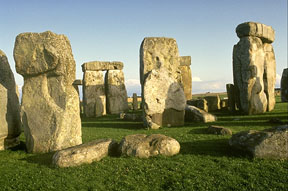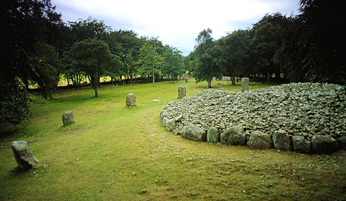Click on image for full size
Courtesy of Corel Photography
The Stones of Carnac
The stones of Carnac, France, are probably the most famous stones markings outside of those found at Stonehenge in England. Where Stonehenge is composed of standing stones, the Carnac area has many different types of stones and ancient markings. Carnac may also be the site of the world's oldest megaliths, the earliest stones dating from around 4,500 B.C.The Carnac region contains many, many Menhir or upright stones. The Menhir stones are sometimes found in a line and sometimes in a circle. They can be anywhere from 0.8 meters high to 6.5 meters high and rows lined with stones can extend for distances of over a kilometer. An enclosure of Menhirs is called a Cromleclh.
Some think these standing stones were signposts, others think they marked burial plots, still others think they were astronomical in nature. Research is going on now to try to find out if these stone markings served as sites for observing the skies or whether they were aligned with Sun or Moon risings or settings.
The area is also home to Dolmens, burial places formed out of big stones. Archeologists have found many bone fragments in these structures and so can be almost certain they were used as burial grounds. Dolmens would have a funeral chamber where people were buried and an access to that chamber. They basically look like a stone fort. There is another type of burial ground that was created by these Neolithic people, the Tumulus. A Tumulus is a huge mound of earth and stones that covers a burial place. It looks like a well-formed hill of dirt, covered with grass and such. A Tumulus didn't allow any access to the burial places. It is thought that sometimes a Dolmen burial ground would be covered with a Tumulus.














